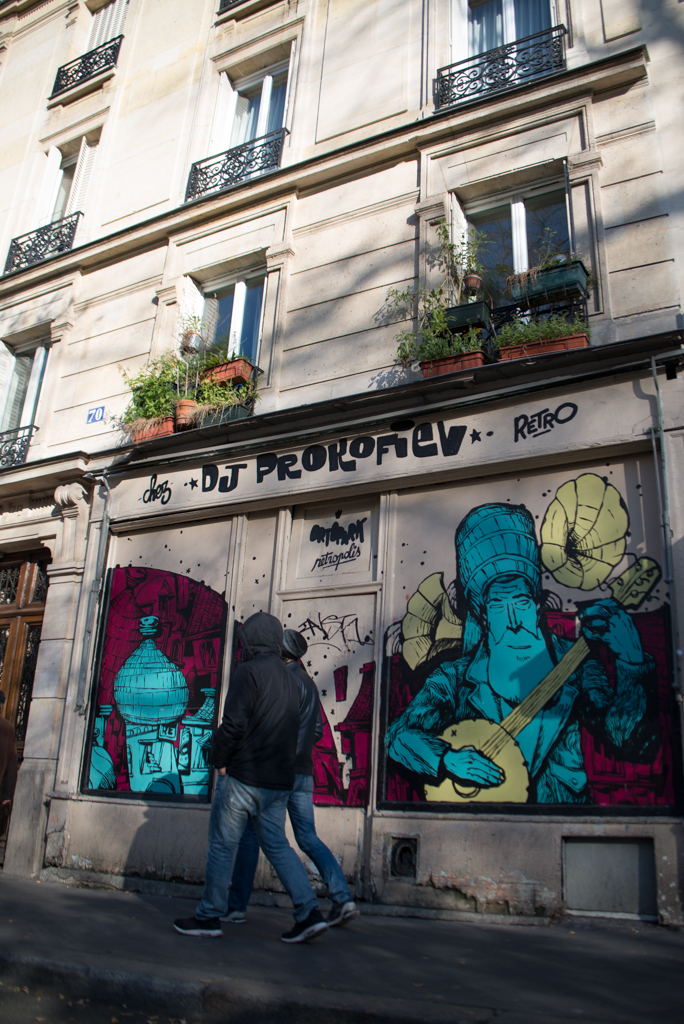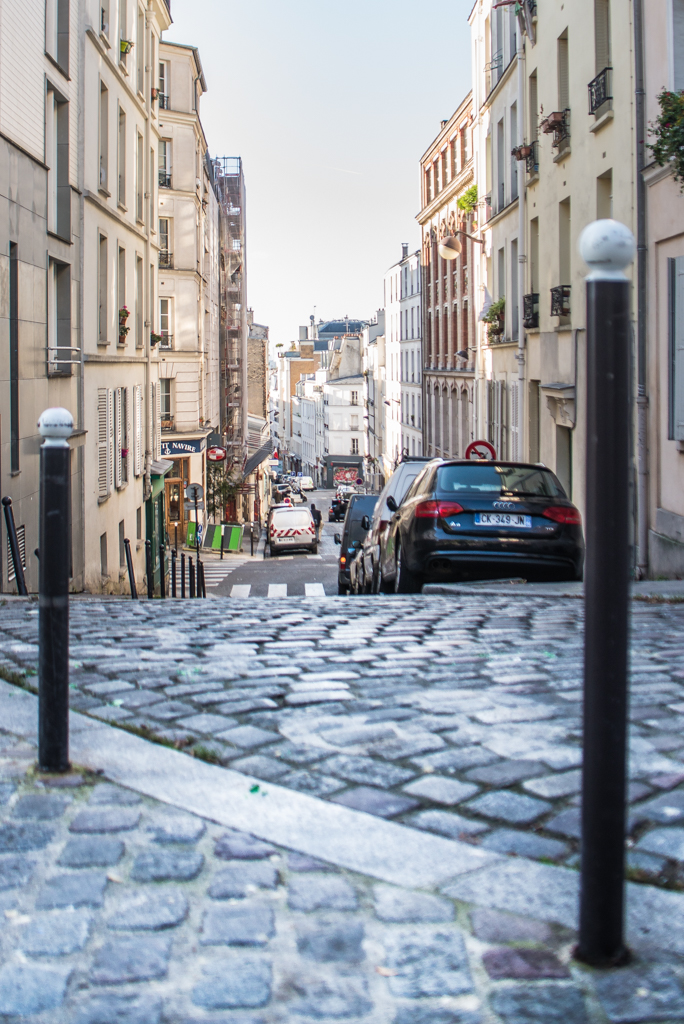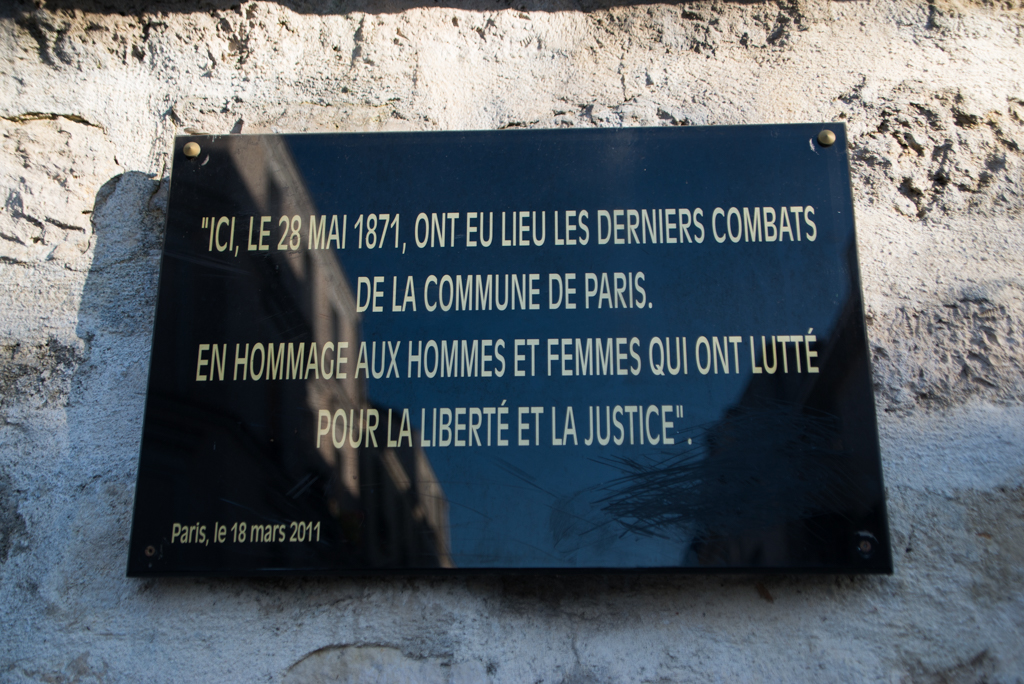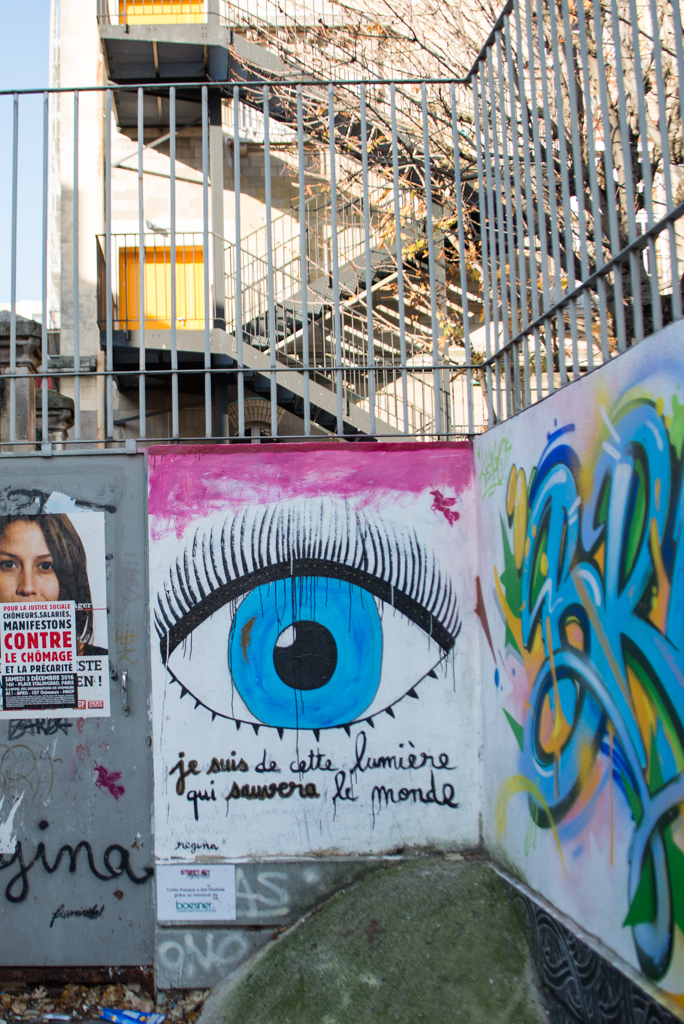
Lingering behind a dense curtain of smoke at his usual table at “Le Muguet”, Monsieur Jo reminisces the old days. He grew up here, in the steep and winding streets of this old quarter of Paris, notorious for the twilight and the red light, the gangs and the prostitution. His face is wrinkled and his back bent, but still he clearly remembers his next door neighbor from when was a boy.
“She sang in all the bistros here, and then held her hand open,” he says, in his thick accent, of the woman who later became an icon of not only this, his neighborhood, but of the whole of Paris: La Môme, Edith Piaf.
Through the smeared window he watches the passers-by in the street. Head-scarfed women lugging their groceries from the Chinese supermarkets, boys with sidelocks and old men’s hats, young men with beards and tattoed arms, and young women in Doc Martens and miniskirts. A lot has changed here, since the days of Edith Piaf, but one thing, it seems, will always remain the same, no matter how the fashions and the accents change: A spirit of independence, of defiance and audacity, lies in the air. A spirit as French as Gallic Rooster. Welcome to Belleville.
A traditional working class neighborhood in the East of Paris, Belleville has always served as a refuge to immigrants from all over the world. Synagogues, halal butcheries and polyglot bookstores reflect a colorful array of Jewish, Armenien, North- and Sub-saharan African cultures living side by side. Artists, attracted by the cheap rents, built their ateliers in the old, treeless back streets, which were spared the fate of most other Paris districts, the bulldozing and redesigning under Baron Haussmann.
Belleville does not provide the typical Paris-experience, but an exciting tour through history preserved in its livelihood and diversity, an authenticity that turns a tourist into a visitor.

Bienvenu à Belleville!
Hop off the metro at “Belleville” station and you resurface right in the middle of Paris’ second “China Town”: Chinese Writing on illuminated signs dominates the scenery. Grab the chance to beef up for the tour ahead (it’s going to be uphill!) at the reasonably priced, though famously packed Wen Zhou Salon De Thé, supposedly the best of the many Chinese Restaurants in the vicinity. Since the 1980ies the Chinese constitute Belleville’s second largest ethnic group, outnumbered only by the latest arrivals in the quarter, the hipsters, or Bobos (Bourgeois Bohémiens) as the French would say. While gentrification is definitely on its way, Belleville’s lively bars and cafés are still cheap and down to earth. It is easy to picture Les Rita Mitsuko, or other French Punk bands, getting started here in the 1980ies.
Take coffee or a digestive at the sun-kissed back garden of Café des Folies, once a cabaret where Edith Piaf performed, now a grungy hang-out. The signature red-tiled front is still intact, the graffiti of Edith Piaf was definitely added later. If you can grab a chair, hold it tight, for chairs at Café des Folies are in high demand.
La Vie En Rose
As you climb Rue de Belleville, a sign at number 72 will inform you that a certain Edit Giovanna Gassion, later known as Edith Piaf, was born here, on the pavement, in 1915. Which is a lore. Edith Piaf was more likely born at Hopital Tenon in nearby Rue Chine. You can corroborate this information in the privately and passionately run Musée Edith Piaf, where her birth certificate is on display.
Turning left, Rue Melingue and Rue des Alouettes will lead you to the Parc des Buttes Chaumont, at the top of the “chauve mont”, “the bald hill”. Despite its name, Park Buttes Chaumont blooms with flowers and trees, and sparkles with joie de vivre. Join the Parisians as they take a bath in the sun, stretched out on the sloping meadows, or for a stroll along the pathways, as they push their prams past little waterfalls to the romantic Temple Sybille. From here the view of Paris is comparable to the famous view from Montmartre, minus the tourists blocking the sight.
If you brought kids, park them at Le Guignol de Paris, a charming, little marionette theatre, while you indulge in local wine at La Guignette “Rosa Bonheur”. Le Guignet, the young wine, produced at vineries of Buttes Chaumont, cultivated here since medieval ages, is traditionally served at outdoors taverns, consequently called “Guignettes”. They are famously depicted in the paintings of Pierre-Auguste Renoir. Rosa Bonheur is just one of these, plus the hipsters. With the wine (not sour, but sec!) and the sunshine come the accordions, the singing and the dancing… La Vie en Rose!
La Commune de Paris
Parc Belleville, only a short walk away, offers an equally splendid view of Paris and the Eiffel-tower. At its entrance gate, a sign commemorates the brave women and men of Belleville, who were the fiercest fighters for the Commune de Paris. In 1871, the year of the short-lived workers’ Commune, the hitherto independent village of Belleville was incorporated into the city of Paris. At Park Belleville the last battles were fought against the French Army, soaking the city with blood and burying the streets in ashes. Still today the communist party scores high in Belleville.

Dans Ma Rue
Descending from Chaumont, pass through Rue Julien Lacroix, where an art installation will warn you to trust words (“If faut se méfier des mots”), which is the more surprising as it sits on top of “Culture Rapide”, a club where every Thursday night open mic poetry slams are held.
Or pass through Rue Denoyez, if you are up for some street-art. Unlike in the rest of Paris, Graffiti is not illegal here and hence abundant, as are the galleries, ateliers and art-cafés. If you are here in May, you are lucky: The local workshops will host their annual open door day.
Alternatively, walk South and through the cemetery Père Lachaise, where you can pay a last tribute to Salvador Dali, Gertrude Stein, Jim Morrisson, Antoine de St. Exupery, Colette, or… Edith Piaf.
Oh, you haven’t got enough of Belleville yet? Stay for the evening, have another glass of rouge, maybe at famous Café Cheri(e). The DJ’s and the party will only start late. Until then, listen to Zaz, a Parisian singer who fills the footprints of Edith Piaf: Dans mon Paris, she sings….
It’s these forgotten parts of Paris that make my heart beat.
With the simple people and the sincerity,
that’s the Paris I want to share.

Le Muguet, 103 Rue de Belleville, has changed owners and after a complete make-over is now called Le Bariolé. This Corner Bistro serves lunch and dinner at a very reasonable price and is perfect to rub shoulders with locals.
When Zhou Salon De Thé is located in 22, Rue de Belleville
Musee Edith Piaf: 5 rue Crespin du Gast, 75011, only by appointment: +33 1 43 55 52 72
Le Guignol de Paris, Parc des Buttes Chaumont is currently showing “Blanche Neige et les Sept Nains” for children from the age of 2. (http://www.guignol-butteschaumont.com/)
La Guignette Rosa Bonheur borrowed its name from the French painter Rosa Bonheur and brings the flavor of the Camargue to Paris. There is a second outlet on a boat in the Seine. http://rosabonheur.fr/
Every Thursday night at Culture Rapide, Paris Lit Up hosts a mostly English-speaking poetry slam: http://parislitup.com/venue/culture-rapide/
The artists of Belleville open their doors each May: http://ateliers-artistes-belleville.fr/
Cemetery Père Lachaise is located at 16 rue du Repos, (pere-lachaise.com) open Mon-Fri 8am-6pm, Sat 8.30am-6pm, Sun 9am-6pm. Free admission.
Café Cheri(e) attracts a young crowd. https://www.facebook.com/cafe.cherie
